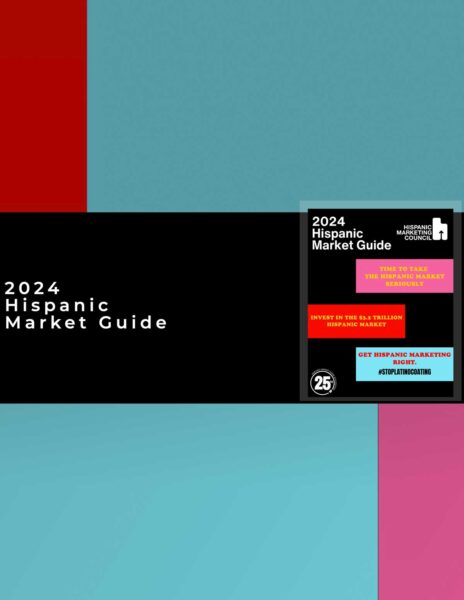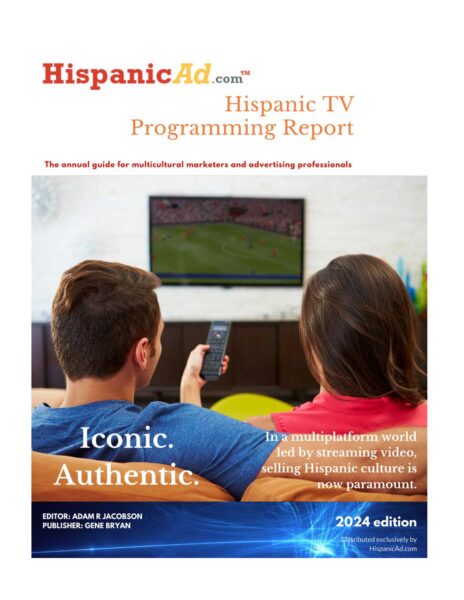The permanence of change
November 17, 2008
 As I attend this year’s ANA Multicultural Marketing Conference I can’t help but feel like companies and brands are being tested like they have never been before, especially on the ethnic consumer front. I can’t help but wonder how corporate America will deal with the unprecedented intersection–a perfect storm–of an economic tsunami and a burgeoning multicultural marketplace. I am intrigued with the prospect of seeing earth-shattering economic and market shifts leaving certain consumer behaviors and market shares frozen in time.
As I attend this year’s ANA Multicultural Marketing Conference I can’t help but feel like companies and brands are being tested like they have never been before, especially on the ethnic consumer front. I can’t help but wonder how corporate America will deal with the unprecedented intersection–a perfect storm–of an economic tsunami and a burgeoning multicultural marketplace. I am intrigued with the prospect of seeing earth-shattering economic and market shifts leaving certain consumer behaviors and market shares frozen in time.
The history of tobacco advertising provides a good lesson for today’s chaotic and uncertain marketplace. In 1950, Camel was the #1-selling cigarette in the U.S., and Marlboro wasn’t even in the top five. In 1963, Marlboro settled on the cowboy character as the iconic “Marlboro Man.” In 1964 Marlboro debuted the “Marlboro Country” advertising imagery, and the brand began realizing annual sales increases of 10%. In 1970 Marlboro moved up to #3, and in 1975 it took the #1 slot. But something happened in 1971: the ban on tobacco TV advertising took effect. Marlboro remained #1 in 1979, again in 1990, and today seems to be permanently ensconced in the top spot.
Questionable advertising messaging and controversy aside, Marlboro’s leadership position seems to have been frozen in place because its iconic imagery was at its peak, right at the moment when such a powerful medium was taken. It is why some marketing experts think that if a broadcast TV ban were to be slapped on the beer industry (as one exists for liquor), Bud Light might go kicking and screaming but it would certainly be pleased with achieving the same status as Marlboro.
Just like a seismic market shift made for permanent shifts in cigarette brand market shares, I think the twin seismic shifts in the economy and in demographics could lead to permanent shifts for today’s marketers. If a brand hasn’t yet ventured into or made a credible investment in the multicultural consumer segment, it could very well be too late. If X brand director doesn’t get it in 2008, I don’t think he/she ever will. When we eventually come out of this economic nightmare, today’s marketing leaders in the multicultural arena will have only gotten stronger, and they will have taken market share from the weaker players. I honestly believe that the best Hispanic marketers, or best multicultural marketers, are at the core great marketers in general.
So who are some of these multicultural marketer stand-outs? Wal-Mart, Anheuser-Busch, Nike, McDonald’s, Toyota, Target, and Coke come to mind. I think that these marketing powerhouses could very well end up winning greater market shares at the expense of weaker players (and perhaps even through consolidation and acquisitions).
A few current examples also help make my point:
State Farm – This mega insurer has more than stepped up to the plate on the Hispanic front. It has not only increased its spend on Spanish-language media, it has also increased its investment signficantly in Hispanic event marketing (i.e. title sponsorship of the Billboard Latin Music Awards, People en Espanol’s “Fiesta”) and in high-profile Hispanic personalities (the Red Sox’ David Ortiz). I’d say Hispanic consumers will take note of these extraordinary moves, and allow State Farm to steal market share from its complacent competitors.
NASCAR vs. UFC – The economic downturn has put NASCAR in an unprecedented position: struggling for sponsorships (forcing it to start cutting the number of races). Contrast that with the exploding Ultimate Fighting Championship (UFC) and mixed martial arts (MMA), and its burgeoning portfolio of sponsors and fans! And speaking of fan bases, while NASCAR has made some modest efforts on the multicultural front, UFC/MMA seems to be enjoying tremendous natural growth. Could it be that UFC’s broad and diverse fan base comes from the fact that its top ranking fighters include some Hispanics? It also helps that the UFC has a Director of Hispanic Affairs. A marketer serious about both the bicultural and less-acculturated Latino (are you listening, Burger King?) could do quite well by embracing UFC.
The gay marriage initiatives – There is no better current case study than the recent experience of the gay and lesbian community, in its fight against gay marriage bans. This month, initiatives to ban gay marriages appeared in three state ballots, and all three initiatives passed. The most striking was California’s Proposition 8. In a state where 94% of African-Americans and 74% of Latinos voted for Obama, the gay and lesbian leadership was surprised to discover that 70% of blacks and 53% of Latinos voted in favor of the gay marriage ban. Now it would be very easy to cite such things as Latino conservatism but if this were the only factor, why wouldn’t we have seen more Hispanics go with the pro-life McCain? I think the explanation is simple: the gay and lesbian leadership assumed they had the minority vote locked up. But it was actually a leader of the pro-gay marriage ban that summed it up best: the opposition’s campaign message “had a lily-white feel.” Obama could have made the same assumption and made one of two conclusions: “Why bother with Latinos since they voted overwhelmingly for Hillary” OR “Those Latinos will naturally come over to my side.” Of course, we know that Obama didn’t take anything for granted and crafted a culturally relevant Hispanic message and Hispanic media strategy. I think the gay and lesbian community will eventually succeed but only if it steals a page from the Obama play book.
We’re certainly living in some precarious times but the multiculturally-literate will come out of this economic seismic shift ahead–permanently ahead of the multiculturally-challenged.































